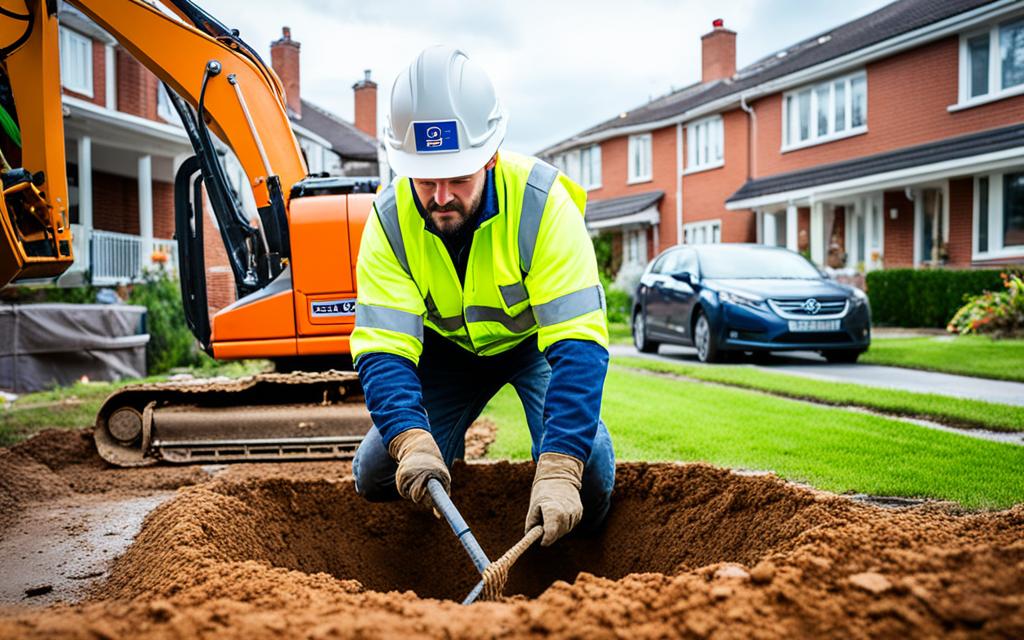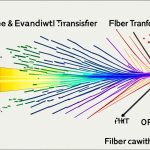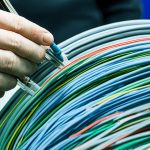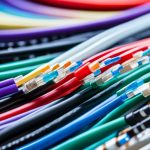Fiber to the Curb (FTTC) deployment is a crucial aspect of achieving last-mile connectivity. It involves bringing fiber optic cables to a curb or cabinet near the user’s location, with the last mile connection made using traditional copper or coaxial cables. FTTC deployment bridges the gap between high-speed fiber connections and individual homes, enabling faster internet access and improved connectivity.
However, FTTC deployment comes with its own set of challenges. Signal loss and degradation over the last mile connection can impact the speeds and overall performance. Careful infrastructure planning is needed to optimize curb cabinet placement and minimize signal loss. Coordination with tenants and property managers in multi-dwelling units is necessary for seamless connectivity within a building.
The Benefits of FTTC
FTTC (Fiber to the Curb) offers several advantages over other fiber optic technologies, making it an attractive option for high-speed internet deployment. Here are the key benefits of FTTC:
- Cost-effective deployment: FTTC utilizes existing copper infrastructure for the last mile connection, reducing the need for extensive infrastructure development. This cost-saving measure makes FTTC a more affordable solution compared to other fiber optic technologies.
- Faster deployment: Instead of laying new fiber optic cables to each home, FTTC involves upgrading the existing network. This allows for faster deployment, minimizing disruption and enabling quicker access to high-speed internet.
- Improved speeds: FTTC reduces the length of copper or coaxial cables used for the last mile connection, resulting in improved speeds compared to technologies like Fiber to the Node (FTTN). This enables users to experience faster and more reliable internet connections.
These advantages make FTTC a compelling choice for delivering high-speed internet to residential areas. By leveraging existing infrastructure, minimizing deployment time, and providing improved speeds, FTTC offers a cost-effective and efficient solution for bridging the digital divide and meeting the growing demand for high-speed connectivity.
Challenges in FTTC Deployment
While Fiber to the Curb (FTTC) offers numerous benefits for last-mile connectivity, it also comes with its fair share of challenges and obstacles. Understanding and addressing these challenges is crucial to ensure successful FTTC deployment and reliable high-speed internet access for users.
Signal Loss and Degradation
One of the primary challenges in FTTC deployment is signal loss and degradation over the last mile connection. As the fiber optic cables transition to copper or coaxial cables for the final connection to individual homes, there can be a decrease in signal quality, impacting the achievable speeds and overall performance.
Infrastructure Planning and Placement
Careful infrastructure planning is essential to optimize the placement of curb cabinets, which are key components of FTTC deployment. The strategic placement of curb cabinets helps minimize signal loss and ensures efficient connectivity. However, this planning requires analyzing factors such as distance, terrain, and existing infrastructure to determine the most optimal positions.
Coordination in Multi-Dwelling Units
In multi-dwelling units, such as apartments or condominiums, coordination with tenants and property managers can pose a challenge. Ensuring seamless connectivity within a building requires collaboration and communication to overcome any potential hurdles or restrictions that may exist, such as wiring limitations or geographical obstacles.
Overcoming these challenges is vital for successful FTTC deployment and enabling reliable high-speed internet access for users.
| Challenges in FTTC Deployment | Impact |
|---|---|
| Signal loss and degradation | Reduces achievable speeds and overall performance |
| Infrastructure planning and placement | Affects signal quality and requires careful analysis |
| Coordination in multi-dwelling units | Ensures seamless connectivity within buildings |
Efficiently addressing these challenges is a crucial aspect of FTTC deployment. Service providers and stakeholders must work together to develop strategies and solutions that enhance signal quality, optimize infrastructure, and promote seamless connectivity, ultimately ensuring the successful implementation of FTTC technology.
FTTC vs. other FTTX Technologies
When comparing Fiber to the Curb (FTTC) with other FTTX technologies, it is crucial to understand the differences and trade-offs. FTTC strikes a balance between the high installation costs of Fiber to the Home (FTTH) and the speed limitations of Fiber to the Node (FTTN).
FTTC offers faster speeds compared to FTTN, making it a more attractive option for high-speed internet connectivity. However, it may not reach the full potential of FTTH in terms of speed, bandwidth, and reliability.
“FTTC strikes a balance between the high installation costs of FTTH and the speed limitations of FTTN.”
On the other hand, Fiber to the Building (FTTB) focuses on connecting multiple units within a building and may be more cost-effective for serving a large number of units within a small area.
Understanding these differences is essential when choosing the most suitable fiber optic technology for specific deployment scenarios. Factors such as budget constraints, desired speed, and existing infrastructure play a significant role in determining the optimal choice.
| FTTX Technology | Advantages | Disadvantages |
|---|---|---|
| FTTH |
|
|
| FTTC |
|
|
| FTTN |
|
|
| FTTB |
|
|
Key Takeaways:
FTTC provides a middle-ground solution between the high costs of deploying FTTH and the limitations of FTTN.
FTTH offers the fastest speeds and high reliability but involves extensive infrastructure development and installation costs.
FTTN is a cost-effective option that utilizes existing copper infrastructure but may result in slower speeds and dependence on the distance from the node.
FTTB focuses on connecting multiple units within a building and can be more cost-effective for serving a larger number of units.
Understanding the differences and trade-offs between these FTTX technologies is crucial for service providers and policymakers to choose the most suitable fiber optic technology for different deployment scenarios.
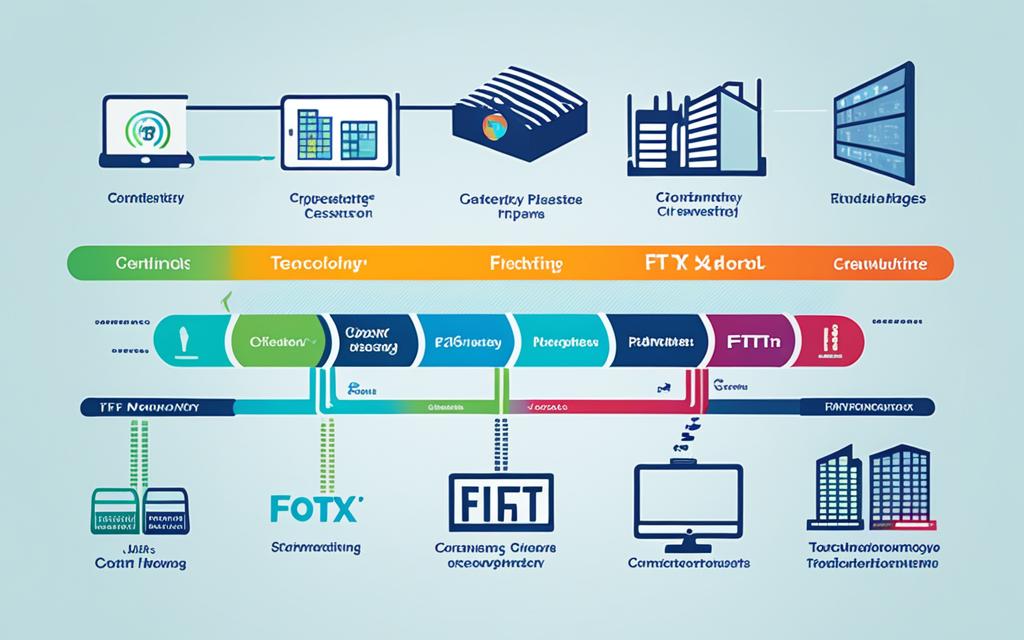
The Future of FTTC
The future of FTTC looks promising, with ongoing research and development focused on improving its performance and addressing existing challenges. Researchers are dedicated to finding solutions to reduce signal loss and degradation over the last mile connection, as well as developing innovative materials and technologies to optimize FTTC deployment.
Advancements in signal processing technologies and alternative materials for last mile connections are being explored, aiming to enhance the efficiency and capability of FTTC. As technology progresses, FTTC is expected to provide higher speeds and improved reliability to meet the growing demands of internet users.
“Continuous research and development efforts are vital in maximizing the potential of FTTC. By overcoming the obstacles, we can ensure faster and more reliable internet connections for residential areas.”
The Advancements in Future of FTTC
- Signal processing technologies to reduce signal loss and degradation.
- Exploration of alternative materials for last mile connections.
- Development of efficient and reliable FTTC deployment methods.
With these advancements, the future of FTTC holds great promise in providing improved internet connectivity for users.

| FTTC Advancements | Impact |
|---|---|
| Reduced signal loss and degradation | Improved connection stability and reliability |
| Innovative materials for last mile connections | Enhanced performance and faster speeds |
| Efficient deployment methods | Cost-effectiveness and faster deployment |
The Role of FTTC in Internet Connectivity
FTTC (Fiber to the Curb) plays a crucial role in internet connectivity, especially in rural areas where deploying FTTH (Fiber to the Home) may be cost-prohibitive. By strategically placing curb cabinets, FTTC brings improved internet speeds to underserved areas, bridging the digital divide and ensuring that communities have access to reliable and high-speed internet connections.
“FTTC brings improved internet speeds to underserved areas, bridging the digital divide and ensuring that communities have access to reliable and high-speed internet connections.”
Furthermore, FTTC is being integrated into smart building technologies, supporting high-speed internet connectivity for various smart devices. This integration enables seamless connectivity within buildings and enhances the overall user experience. From smart homes to smart cities, FTTC plays a pivotal role in enabling the Internet of Things (IoT) and driving the digital transformation of our urban environments.
The Benefits of FTTC in Rural Areas:
- Improved internet speeds: FTTC brings faster and more reliable internet speeds to rural communities, allowing them to fully participate in the digital economy.
- Connectivity for remote areas: FTTC enables internet connectivity in remote and underserved areas, providing opportunities for education, telemedicine, and economic growth.
- Cost-effective deployment: FTTC leverages existing infrastructure, reducing the cost of bringing high-speed internet to rural areas.
- Alternative to satellite internet: FTTC offers a viable alternative to satellite internet, providing lower latency and higher bandwidth.
Table: Comparison of FTTC, FTTH, and Satellite Internet
| Technology | Latency | Bandwidth | Availability |
|---|---|---|---|
| FTTC | Low | High | Dependent on infrastructure deployment |
| FTTH | Low | Very High | Dependent on infrastructure deployment |
| Satellite Internet | High | Moderate | Available in most areas, but with higher latency |
FTTC provides a scalable solution for internet connectivity in rural areas, balancing cost-effectiveness and performance. While it may not achieve the same speeds as FTTH, it offers a significant improvement over traditional internet options like satellite internet.
As internet connectivity becomes an essential part of our daily lives, the role of FTTC in bridging the digital divide and empowering rural communities cannot be underestimated. Its cost-effective deployment and ability to deliver improved internet speeds make it an integral component of a comprehensive and inclusive digital infrastructure.
Conclusion
Choosing the right fiber optic technology is essential as the demand for high-speed internet continues to grow. Among the various options like FTTH, FTTN, FTTB, and FTTP, FTTC offers a balanced approach between cost-effectiveness and speed. While FTTH is the gold standard for the fastest and most reliable connectivity, FTTC leverages existing infrastructure and bridges the gap between fiber optic cables and individual homes using traditional copper or coaxial cables.
When making this decision, factors such as desired speed, budget constraints, and existing infrastructure must be carefully evaluated. FTTH is ideal for scenarios where speed and reliability are crucial, and there is a budget for extensive infrastructure development. On the other hand, FTTC is a cost-effective solution that allows for faster deployment through the utilization of the existing network.
Ultimately, service providers and policymakers play a critical role in determining the most suitable solution for each scenario. By considering the specific needs and limitations of the target area, they can ensure reliable and future-proof connectivity for all, bridging the digital divide and meeting the increasing demand for high-speed internet.
FAQ
What is FTTC deployment?
FTTC (Fiber to the Curb) is a fiber optic technology that brings fiber optic cables to a curb or cabinet near the user’s location. The last mile connection is then made using traditional copper or coaxial cables.
What are the benefits of FTTC?
FTTC offers a cost-effective deployment solution by utilizing existing copper infrastructure for the last mile connection, allowing for faster deployment by upgrading the existing network, and providing improved speeds compared to technologies like FTTN.
What challenges are faced in FTTC deployment?
Signal loss and degradation over the last mile connection, careful infrastructure planning for curb cabinet placement, and coordination with tenants and property managers in multi-dwelling units are some of the challenges faced in FTTC deployment.
How does FTTC compare to other FTTX technologies?
FTTC strikes a balance between the high installation costs of FTTH and the speed limitations of FTTN. While FTTC provides faster speeds than FTTN, it may not match the full potential of FTTH. FTTB focuses on connecting multiple units within a building and may be more cost-effective for serving a large number of units.
What is the future of FTTC?
Ongoing research and development are focused on improving performance and overcoming challenges in FTTC deployment. Advancements in signal processing technologies and alternative materials for last mile connections are being explored to make FTTC more efficient and capable of providing higher speeds and improved reliability.
What is the role of FTTC in internet connectivity?
FTTC plays a crucial role in providing high-speed internet connectivity, especially in rural areas or places where FTTH deployment may be cost-prohibitive. It helps bridge the digital divide and ensures that communities have access to reliable and high-speed internet connections. FTTC is also being integrated into smart building technologies, supporting high-speed internet connectivity for various smart devices.
How do I choose the right fiber optic technology?
The choice between FTTC, FTTH, FTTN, FTTB, and FTTP depends on factors such as desired speed, budget constraints, and existing infrastructure. While FTTH offers the fastest and most reliable connectivity, FTTC provides a balanced approach between cost-effectiveness and speed. Careful evaluation of these factors is necessary to determine the most suitable solution for different scenarios.

